Wildflowers in California bloom on their own schedules. In some years, conditions are right for explosive wildflower growth in particular locations, while in other years, drought or other conditions cause very few to bloom anywhere. However, there are some years when ideal sunlight, humidity, and widespread winter rains throughout California cause what is referred to as “super blooms” or “superblooms.” During these events, wildflowers will bloom spectacularly all at once. Will there be a California wildflower superbloom in 2024? If so, when will the peak timing be, and what places will have the most spectacular show? Read on to learn this and more!
Peak Superbloom Timing in California

During California superblooms, many wildflowers, like these poppies, will bloom all at once.
©Megs Lang/Shutterstock.com
Depending on conditions and elevation, peak wildflower timing can occur as early as February through mid-July.
Ideal Superbloom Conditions
We hear a great deal about rain being the critical component of wildflower bloom, but three factors determine whether a wildflower season will be spectacular.
- Rain: An initial rainstorm is required to wash the seed’s exterior and allow it to sprout. After that, regular soaking rains are needed to grow through winter.
- Warmth: As spring approaches, the sun’s warm rays are needed to accelerate the growth of the wildflowers.
- Absence of harsh winds: Finally, harsh dry winds can dry out the plant material, causing the wildflowers to wither and die.
These factors must combine during the same growing season to have a spring superbloom. With that in mind, one should note that these blooms happen at different times at different elevations.
Elevation
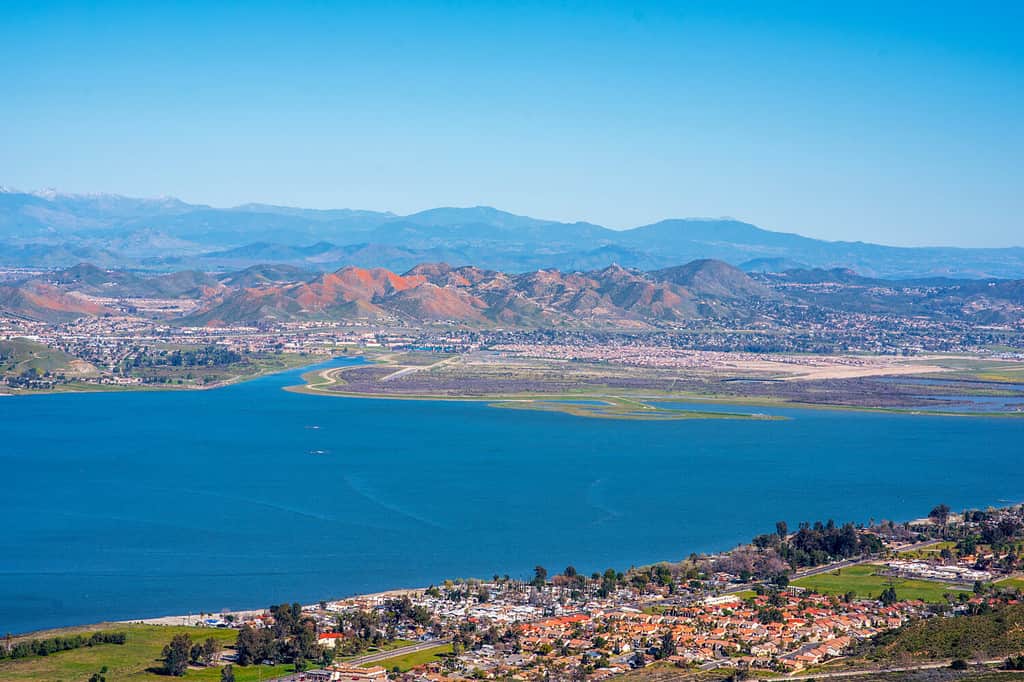
Here, you can see an orange wildflower explosion on the elevated peaks above Lake Elsinore.
©Marie1969/Shutterstock.com
Elevation impacts wildflower growth. Wildflower blooming at lower altitudes occurs earlier than at higher ones. Also, bloom events that occur at higher altitudes last longer. Low-altitude superblooms are very ephemeral—blink, and you may miss them. You may have a better chance of catching them at higher altitudes.
Best Places To See Wildflower Superblooms in California
Predicting a wildflower superbloom is nearly impossible. Wildflower watchers should pick an ideal location, research the dates of previous years’ occurrences, watch the conditions, and monitor wildflower reports from enthusiasts and park employees. The Theodore Payne Foundation offers a Wild Flower Hotline beginning in March that reports wildflower blooms and the best places to see them in Central and Southern California.
Below are some top locations to view wildflower superblooms in 2024, along with contact information and possible superbloom dates.
Antelope Valley State Poppy Reserve
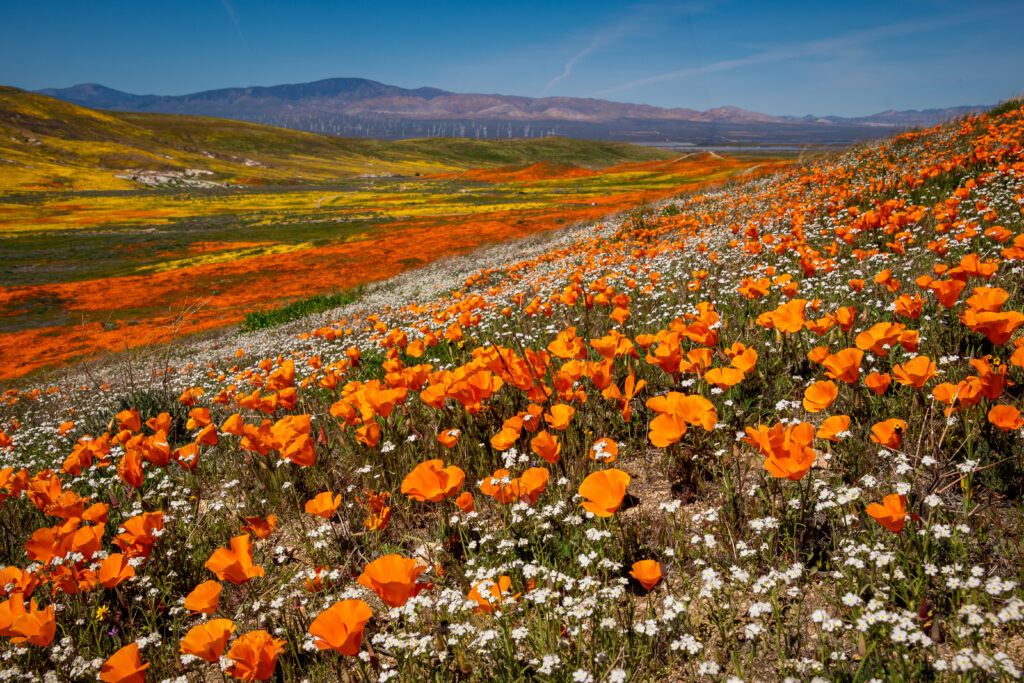
Poppies, the California state flower, grow in abundance in
Antelope
Valley.
©MierCat Photography/Shutterstock.com
The Antelope Valley State Poppy Reserve is a great place to view wildflowers, superbloom or no, north of Los Angeles. The website will post regular poppy updates when the wildflowers begin to bloom and even has a webcam to view the current status of poppies in the meadow. Call the Poppy Reserve Wildflower Hotline (661-724-1180) for poppy updates. The peak viewing period is generally late March through early April, but this varies significantly due to conditions.
Anza-Borrego Desert State Park

A wildflower explosion of color at Anza-Borrego State Park,
©Jnjphotos/Shutterstock.com
Northeast of San Diego and 30 miles west of the Salton Sea, Anza-Borrego Desert State Park is a great place to view a variety of wildflowers. The best source of information for wildflower blooms here is the Anza-Borrego Desert Natural History Association (ABDNHA). They have a Borrego Blooms page with current information on wildflowers in the park. Blooms have been sighted, and they are currently anticipating peak time to be late February to mid-March.
Channel Islands National Park
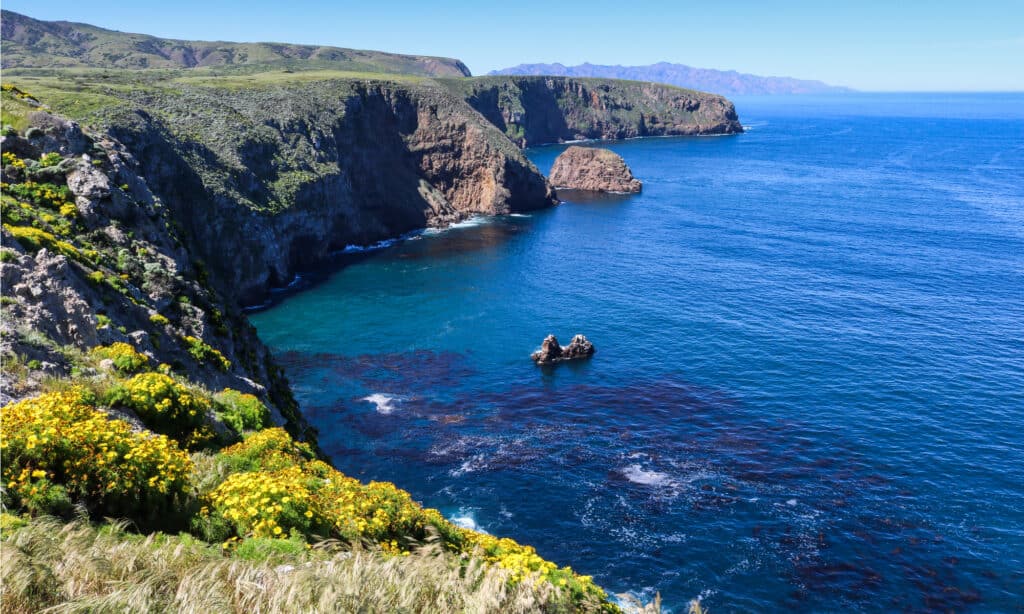
Wildflowers on the Channel Islands bloom at different times according to whether an island is further east or west.
©Bram Reusen/Shutterstock.com
Channel Islands National Park is another great place for wildflower viewing. Located just off the coast of Los Angeles and the Santa Monica Mountains, the Channel Islands boasts over 800 plant species. Wildflowers tend to bloom from late January through spring, though it is different for each island. Some wildflower announcements are already being made on the park’s Instagram Account.
Chino Hills State Park
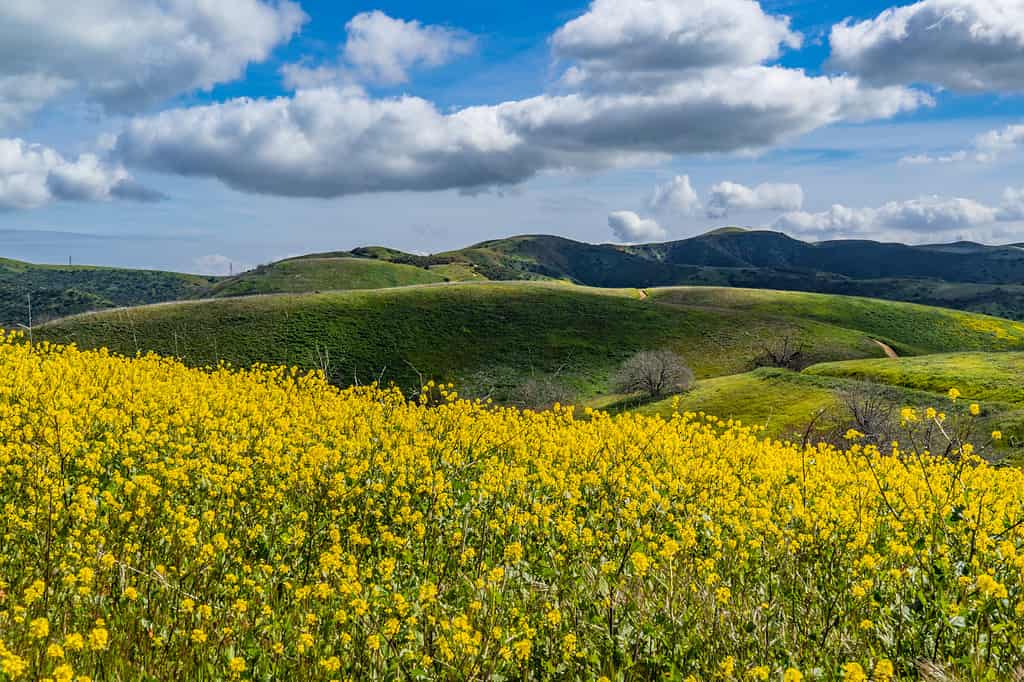
In many years, the peak wildflower season in Chino Hills State Park is around the middle of March.
©YoungkKwon/iStock via Getty Images
Just east of Los Angeles and Anaheim, Chino Hills State Park has a beautiful collection of wildflowers. It is said that the flowers here reach their peak in mid-March, though poppies may be seen beginning in mid-February.
Coachella Valley

During peak season, wildflowers carpet the floor of Coachella Valley.
©James Billimore/iStock via Getty Images
Wildflower blooms occur in Coachella Valley, between Joshua Tree National Park and Anza-Borrego Desert State Park, east of Los Angeles. The Coachella Valley Preserve is an excellent place to view the wildflowers at their peak from the middle of February through early April.
Death Valley
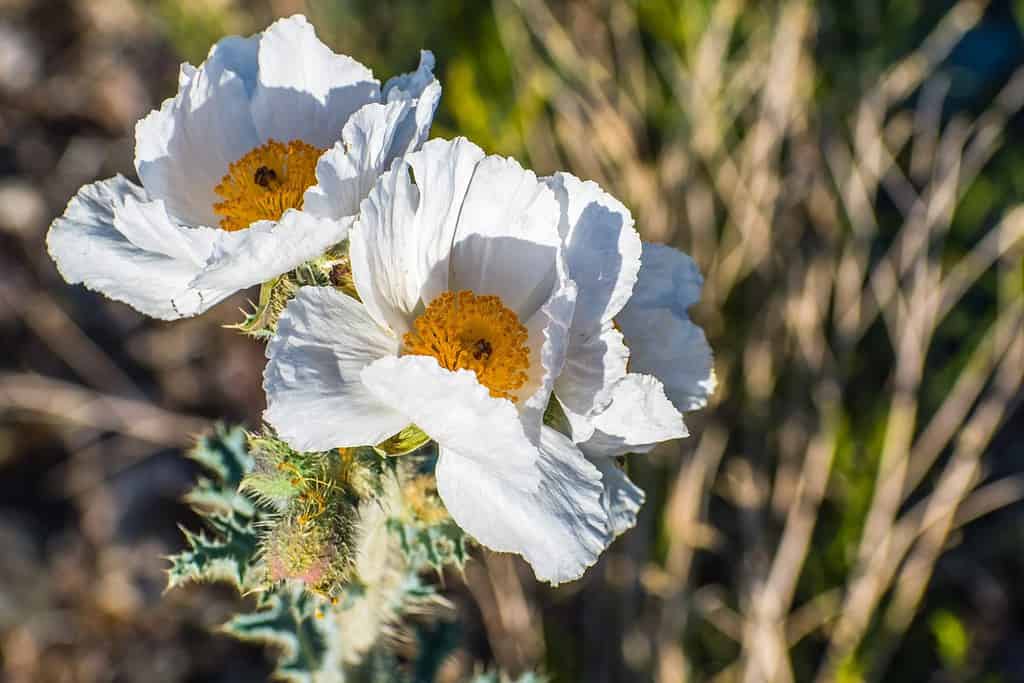
Prickly poppies bloom in Death Valley National Park.
©Sundry Photography/Shutterstock.com
Some of the best-known superblooms have occurred in Death Valley National Park, just across from Las Vegas on the California/Nevada border. Wildflowers bloom in the park in stages according to elevation. Beginning in February, wildflowers bloom through mid-April in the foothills and lower elevations. In early April, blooms continue at elevations of 3,000 to 5,000 feet through early May. Finally, wildflower season comes in early May to the upper elevations above 5,000 feet and lasts into July. Wildflower updates are regularly posted on the national park website.
Joshua Tree National Park

Wildflowers can be found at multiple elevations in Joshua Tree National Park.
©Melissa Kopka/iStock / Getty Images Plus via Getty Images
Joshua Tree National Park, located east of Los Angeles, also has an impressive array of wildflowers. The park has a dedicated web page for wildflower information. Like Death Valley, wildflower bloom dates vary according to elevation. Low-elevation events occur from January to mid-April. Wildflowers bloom from early March to Early May at elevations of 3,000 to 5,000 feet. Finally, wildflowers bloom above 5,000 feet from April through June. You can follow (and contribute to) wildflower sightings at the Joshua Tree National Park Wildflower Watch project.
Other Places To See Wildflower Superblooms in California
The nationally known places above aren’t the only places to experience a superbloom. Below are other California locations with potential wildflower superblooms.
- Carrizo Plain
- Diamond Valley Lake
- Eastern Sierras
- Figueroa Mountain Recreation Area
- Folsom Lake – Beeks Bight
- Idyllwild Nature Center
- Lake Tahoe
- Lassen Volcanic National Park
- Mojave National Preserve
- Montaña de Oro State Park
- Mount Diablo State Park
- Mount Tamalpais State Park
- Napa County
- Pinnacles National Park
- Point Dume
- Point Mugu State Park
- Point Reyes National Seashore
- Sedona
- Shell Creek Road Meadows
- Sugarloaf Ridge State Park
The Dark Side of Wildflower Superblooms
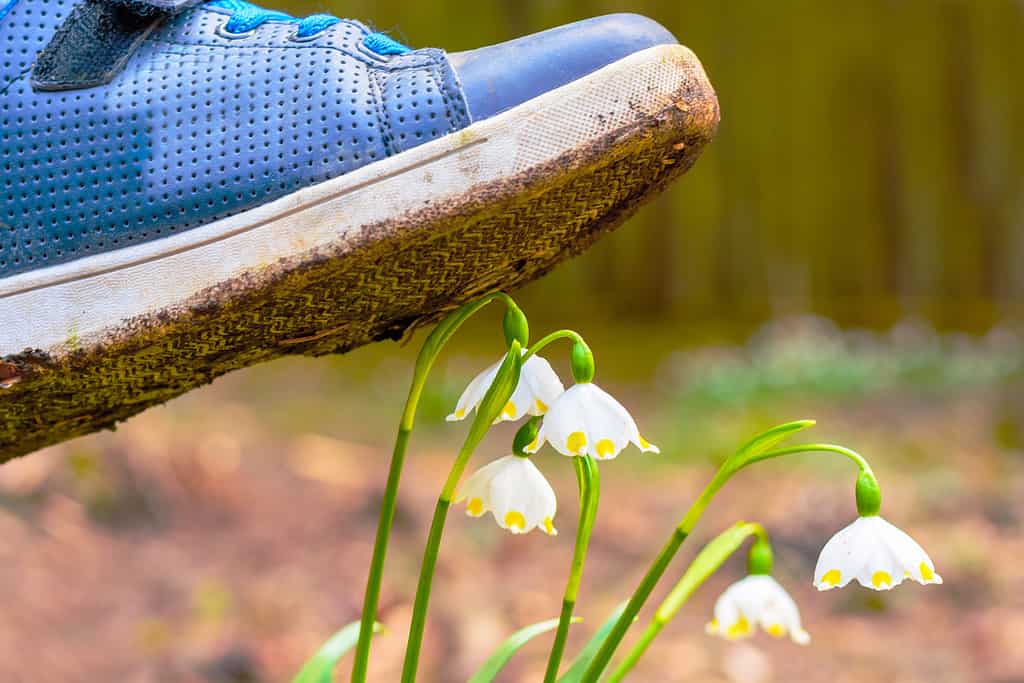
Careless tourists can have a destructive impact on California’s wildflower fields, sometimes treading carelessly on fragile blooms.
©karelpesorna/iStock via Getty Images
When there is a superbloom in California, enthusiasts come from around the world to see the rare occurrence. This leads to many problems, such as overcrowding, vandalism, littering, path erosion, and wildflower destruction. Some guests will go so far as to take destructive vehicles off-road or pick the wildflowers. These crowds can also hurt local wildlife by disturbing or destroying vulnerable habitats or feeding wild animals.
Visitors to these locations need to educate themselves on park rules and best practices. Listen to park guides and rangers and follow posted rules. When in doubt, the best philosophy is to “leave no trace.” Carry nothing in, take nothing (but trash) out, and leave everything as you found it.
The photo featured at the top of this post is © Juancat/Shutterstock.com
Thank you for reading! Have some feedback for us? Contact the AZ Animals editorial team.






